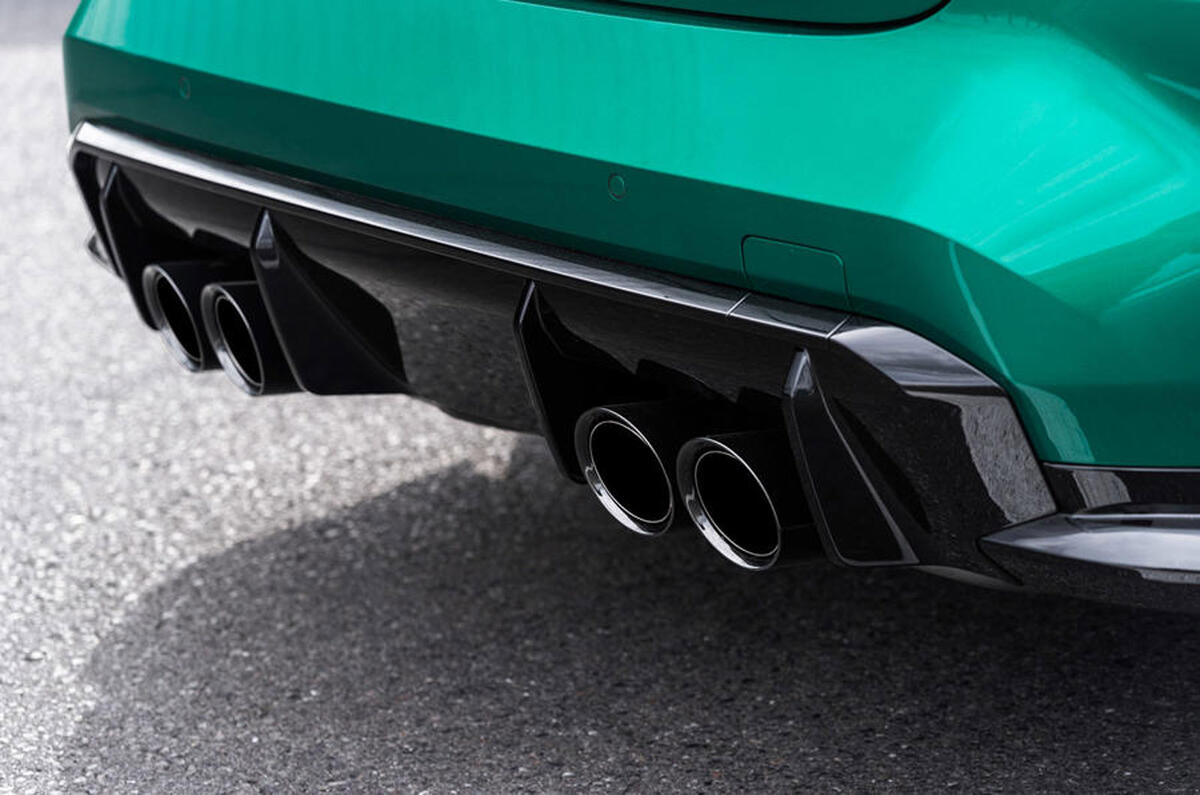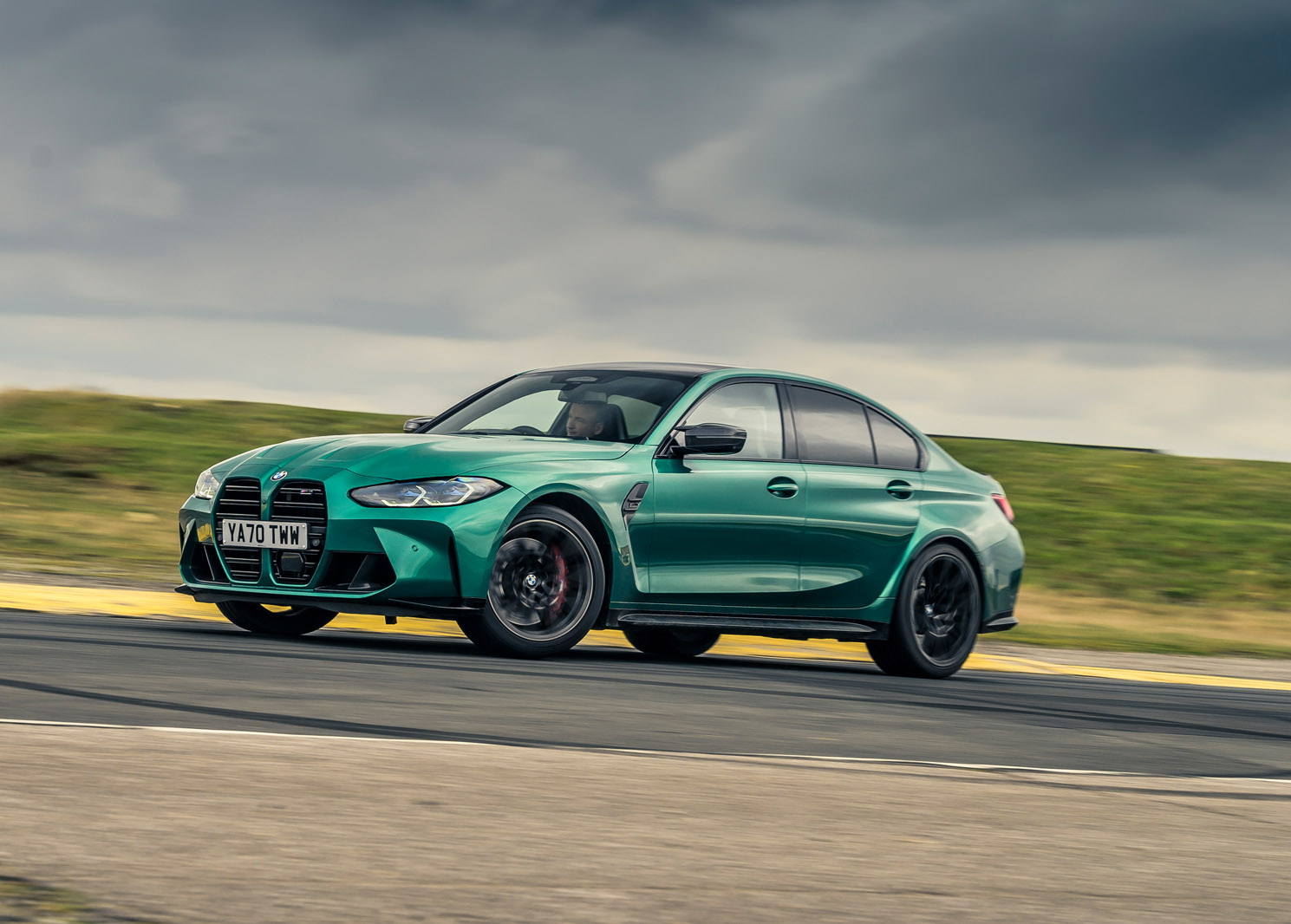The interior of this M3 is a considerably flashier and more exotic place in which to travel than any of its predecessors were. That’s partly because the modern 3 Series that forms its basis is itself a much more materially ritzy-glitzy and lavish prospect than its more humble antecedents once were. And yet the M3 wastes few opportunities to dial up the performance theatre and material wow factor.
The car offers four passenger doors and seats up to five occupants, with space in the second row being more than adequate for adults of average height - although it’s much more comfortable for two than three across the rear bench.
Up front, the user interface for the infotainment retains a separate dial and array of buttons, thankfully – not the sort of thing you should overlook in a daily proposition. The car’s driving position is superb: low, straight-legged and really purposeful-feeling.
The car’s iDrive set-up is great – a mix of touchscreen and rotary dial, with supplementary buttons on the centre console, and a whole load of other normal buttons on the dashboard, some of which are configurable.
There are also BMW M’s usual orange M1 and M2 toggles, mounted on the steering spokes perfectly for your thumbs, that allow you to ‘save’ particular combinations of engine, suspension, steering, driveline and traction-control settings and then dial them up near instantly when you want them. Which, in terms of taming this car’s complexity, might just be the best approach in the business.
The rest of the interior seems as swishly put together and is similarly functional, with a round (if overly thick) steering wheel and clear digital instruments.
Whatever you do, though, don’t spec the optional M Carbon Bucket Seats (in a £3400 pack with some other options), with their curious raised insert between your thighs. In single-seat or very serious racing cars, seats shaped like this, even more exaggerated, make sense: they keep your legs in place under high cornering loads and prevent them from flailing in a crash.
But in a road car, what appears to be some kind of carbonfibre penis tray looks daft and is plain obstructive; the surrounding bolstering can make the seats themselves really awkward to get in and out of; and the carbonfibre shell backs will be hard on the knees of anyone travelling in the rear seats, not to mention vulnerable to scuffs and scratches.
So what of the Touring? It has all the capability of the regular 3 Series estate, down to the independently opening rear windscreen hatch and rubber strips in the boot floor that rise up when you're on the move to prevent anything sliding around the substantial load bay. The second-row seats fold flat, and so arranged the car amounts to three parts: monstrous turbo engine, bucket seats and an endless boot in your rear-view mirror. For those wanting to live out their wildest Rickard Rydell fantasies, look no further.













































